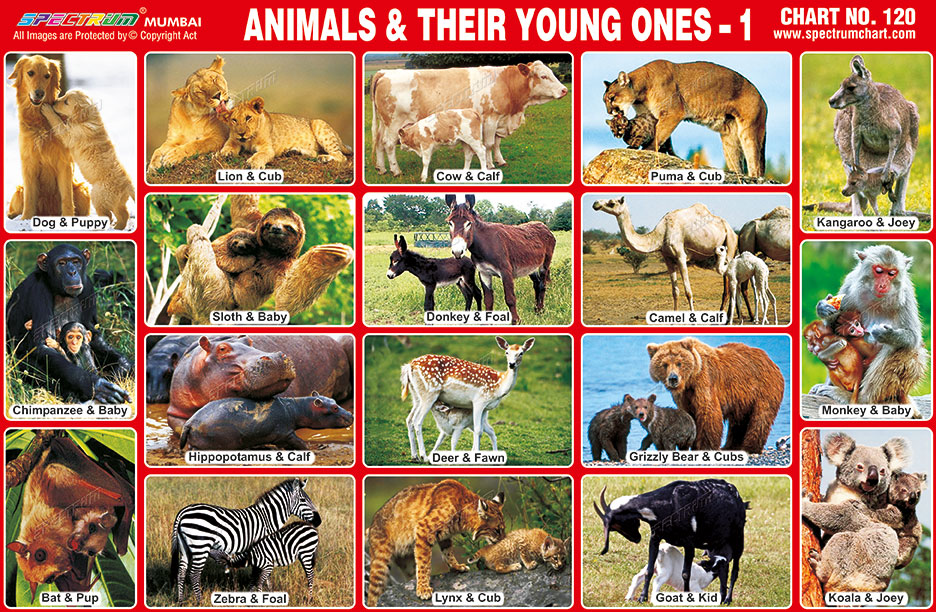Exploring The Bonds Of Life: Animals With Their Young Ones
Animals have long fascinated humans with their nurturing behaviors towards their young. From the moment of birth, these creatures exhibit a range of protective and teaching behaviors that ensure the survival and well-being of their offspring. The diverse world of the animal kingdom showcases an array of parenting styles, from the diligent care of mammals to the more independent nature of certain bird species. Understanding these relationships not only deepens our appreciation for wildlife but also sheds light on the complexities of life itself.
In this article, we will delve into the world of animals with their young ones, exploring the various parenting techniques employed by different species. We will examine the emotional connections, survival strategies, and remarkable adaptations that have evolved over time, enabling these species to thrive in their respective habitats. Through captivating examples and insightful observations, we aim to paint a vivid picture of the nurturing bonds that exist in the animal kingdom.
Join us as we embark on this enlightening journey, discovering how animals care for their young ones and the extraordinary behaviors that define these relationships. Whether it’s the tender care of a mother lion or the more hands-off approach of certain reptiles, there’s much to learn about the intricate dynamics of parenting in nature.
What Are Some Common Parenting Styles Among Animals?
Animals exhibit a variety of parenting styles that can be broadly categorized into three main types:
- Intensive Care: Some animals, like elephants and primates, invest significant time and energy into nurturing their young. They provide them with protection, teach them survival skills, and often stay with them for an extended period.
- Minimal Care: Species such as certain fish and reptiles may lay eggs and leave them to develop independently. These animals provide little to no post-hatching care, relying on the sheer number of offspring to ensure that some survive.
- Intermediate Care: Many bird species fall into this category, where parents actively feed and protect their young until they are ready to fend for themselves.
How Do Animals With Their Young Ones Communicate?
Communication is key to the survival of young animals. Various methods are employed by mothers and their offspring, including:
- Vocalizations: Many species use sounds to communicate emotions or alert their young to danger. For example, mother birds may chirp to call their chicks.
- Body Language: Non-verbal cues, such as grooming or nuzzling, can convey affection and safety, reinforcing bonds between mother and young.
- Visual Signals: Some animals use visual displays, such as color changes or posturing, to communicate with their young about threats or opportunities.
What Are the Unique Challenges Faced by Young Animals?
Young animals face numerous challenges as they grow and develop, including:
- Predation: Vulnerable to predators, young animals must learn to hide or flee to survive.
- Finding Food: Many young animals must learn to forage or hunt for food, which can be a daunting task without parental guidance.
- Environmental Hazards: Weather conditions, habitat destruction, and other environmental factors can pose significant threats to young animals.
Which Animals Exhibit the Most Affection Toward Their Offspring?
Affectionate behaviors in the animal kingdom are particularly evident in species such as:
- Primates: Many primates, including gorillas and chimpanzees, display strong emotional bonds with their young, often seen hugging or grooming them.
- Canines: Wolves and domestic dogs are known for their protective nature and nurturing behaviors towards their pups.
- Marine Mammals: Dolphins and whales are known to exhibit playful and affectionate behaviors with their calves, showcasing strong social bonds.
How Do Animals Adapt to Ensure Their Young Ones' Survival?
Adaptations in animal behavior and physiology are crucial for the survival of young. These adaptations include:
- Nesting Strategies: Birds build nests that protect their eggs and young from predators and environmental hazards.
- Migration: Some species migrate to find better resources for raising their young, ensuring they have access to food and safe environments.
- Teaching Skills: Many animals, such as elephants and wolves, teach their young essential survival skills, from hunting techniques to social behaviors.
What Role Does the Environment Play in Parenting Styles?
The environment significantly influences how animals care for their young. For instance:
- Habitat Safety: In safer habitats, animals may invest more time in raising their young, while those in dangerous environments may adopt quicker, less involved parenting styles.
- Food Availability: Abundant resources may allow for more intensive care, while scarcity can force animals to abandon some offspring.
- Climate Conditions: Harsh climates may require animals to adapt their parenting styles to ensure their young can survive the elements.
How Do Animals With Their Young Ones Influence Ecosystems?
The presence and behaviors of animals with their young can greatly impact ecosystems. Some key influences include:
- Seed Dispersal: Animals like birds and mammals help in seed dispersal, contributing to plant diversity and ecosystem health.
- Predator-Prey Dynamics: The survival of young animals affects the balance of predator and prey populations, influencing the entire food web.
- Nutrient Cycling: Decomposing remains of animals, including their young, contribute nutrients back into the soil, promoting plant growth.
Conclusion: The Importance of Understanding Animals With Their Young Ones
Studying animals with their young ones offers invaluable insights into the complexities of life and the importance of nurturing behaviors in the animal kingdom. These relationships not only ensure the survival of species but also shape ecosystems in profound ways. By deepening our understanding of these bonds, we can foster a greater appreciation for wildlife and advocate for conservation efforts that protect both animals and their habitats. Ultimately, the story of animals and their young is a testament to the resilience and adaptability of life on Earth.
Mastering The Art Of Flirting: Pick Up Lines For Guys
Unveiling The Life And Achievements Of The Angola Coach
Unveiling The Life Of Taylor Sheridan: A Comprehensive Biography


